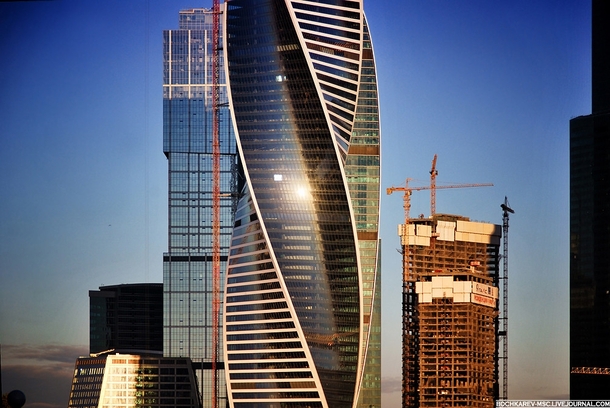Modelling a curved building
Is it possible to model curved-shaped building like an Evolution tower (but much more smaller :) )?
I think I need an additional plug-in for SketchUp, isn't it?

The short answer is yes! you can. You can use Honeybee for Grasshopperto export almost any type of geometry. Here is the video: (https://www.youtube.com/watch?v=t0mgs...). At the same time as other people pointed out it is worthwhile to simplify your geometry. EDIT: As @Kent Beason mentioned above it will end up being a meshed geometry for energy simulation purposes.
Other softwares can export geometry like that, but it comes across meshed also. My comment wasn't aimed as a plug for a particular software (the video was good though!), but mainly to point out the reality of modeling surfaces that are curved in whatever 3D modeling tool users are using and how they ultimately get stuffed into the simulation engine. Many times what you get in the end is not practical with respect to simulation duration.

Are you then trying to simulate the model? Which tool? Curves need to be simplified into a number of straight sections, and the fewer sections the faster the model will run.
Jamie, thank you for your reply and editing my post. Yep, I need to simulate it. The question is transformed to should I really need to model this building with all these curves etc. or simplifying the model to one floor square building with multipliers is the better way?
It depends on the shape (number of floors, type of curves, etc) but yes, if it's similar uses on each floor I'd go with modelling a ground floor, intermediate floors with a multiplier (perhaps more than one type if there are differences, e.g. upper floors with different HVAC systems or occupancy schedules, activities, etc.), and a top floor. And simplify the curved sides to the point where run time is acceptable to you.
Looks like a paper to be presented at the ASHRAE Energy Modelling Conference at the end of the month might be useful... "Modeling Complex Geometries in Whole Building Energy Simulations" Cheryl Saldanha, Arfa Aijazi and Sean O'Brien
The question about simplifying is still not clear... Does the curved sides make significant contribution to end results?